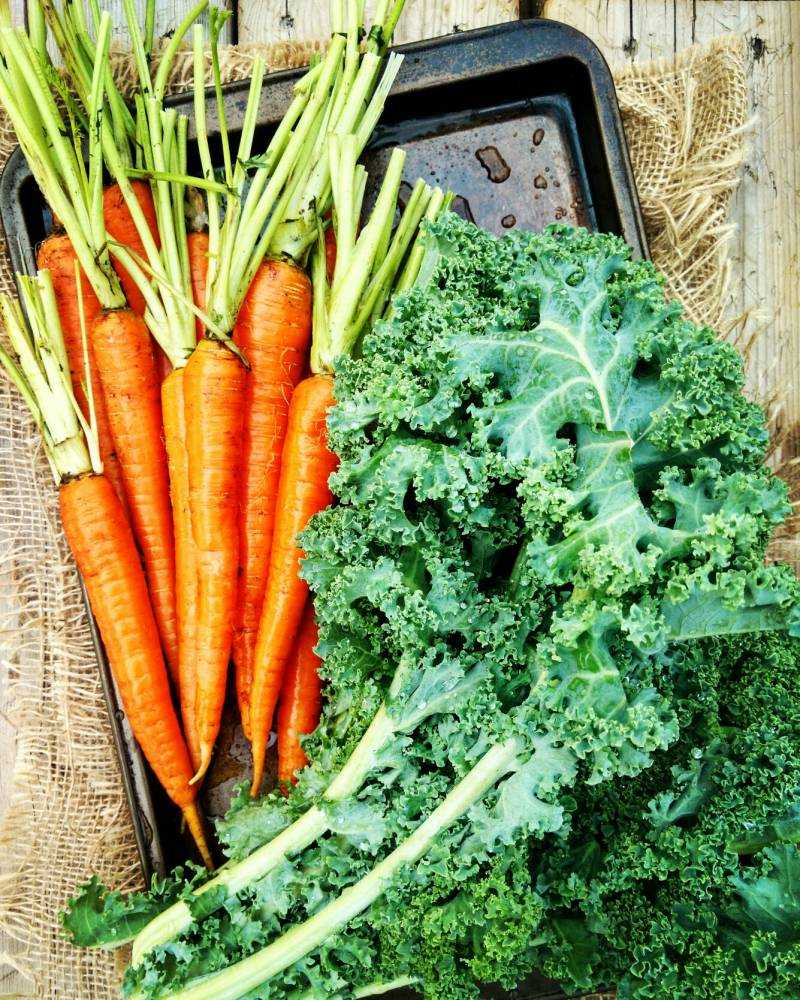BY EARTHA LOWE
If you love butter smothered on soft hard dough bread like I do, then you’ll appreciate today’s bonus recipe for a substitute that’s just as enjoyable. Only, it’s a delicious, plant-based, heart-friendly spread that will make you say “Kale Yeah!” Healthy can start right here. Being healthy is our decision to feed our happiness with fabulous-tasting food, it’s choosing to be active, it’s choosing to always look on the bright side of life.
Kale with Roasted Carrots: Here’s how to cook this naturally sweet, crunchy pan of vegetables.
You’ll need
- 6 baby carrots, halved lengthwise
- 2 tablespoons extra-virgin olive oil
- 1 tablespoon dried oregano
- ½ teaspoon curry powder
- ½ teaspoon coarse sea salt (plus more to taste)
- ½ tablespoon freshly ground black pepper (plus more to taste)
- Pinch of cumin
- ½ bunch kale leaves, chopped
- 3 garlic cloves, finely minced
- Walnuts, crushed (as desired)
Directions:
Preheat oven to 350°F.
Toss the carrots with the olive oil, oregano, curry powder, sea salt, pepper and cumin. Place on a baking sheet. Roast in preheated oven for 15 minutes, or until tender.
Cooking the Kale: Heat the remaining olive oil in a skillet on medium – high heat. Add the garlic and sauté for 1 minute. Make sure to stir continuously so the garlic does not turn brown. Add the kale and stir for 1 minute more. Add 1 tablespoon water, cover and let steam for 1 minute.
Remove cover and stir in your roasted carrots. Top with walnuts. Add additional salt and peppers as desired, to taste. Serve hot.
Food category: vegan, vegetarian
Prep and cook time: 25 minutes
Difficulty: EASY!
Servings: 4
Tips: Substitute the olive oil with coconut oil.
Alternatively, you can grill the carrots. Place carrots cut side down on a heated grill. Grill for 4 – 5 minutes, or until carrots develop sear marks and begin to soften. Flip and grill for another 4 – 5 minutes.
BONUS RECIPE: Kale & Walnut Pesto
Call it the “new butter,” there’s so much that’s great about pesto. It adds big flavor to all sorts of dishes! You can toss pesto with pasta, spread it over bread, add it to roasted vegetables or salmon, use it as a dip, or even make it your pizza sauce. There is just no wrong way to enjoy this flavorful sauce.
The best part about making pesto is that you can be flexible. Pesto is traditionally made with a combination of herbs such as basil, mint, parsley and cilantro. Pesto is also traditionally made with pine nuts, but pecans, walnuts or hazelnuts can be used as substitutes. Walnuts yield a flavor closest to traditional pesto made with pine nuts.
This pesto is vegan; great for plant-based foodies. You have the option to add nutritional yeast for a cheesy parmesan flavor, but believe me, you will not miss it. Make sure to have a good food processor on hand for smooth blending.
You’ll need
- 2 cups kale leaves, remove stems
- 1 cup fresh basil leaves
- ¾ cup walnuts, raw
- 3 tbsp extra virgin olive oil (add additional olive oil as needed when blending)
- 1 small lemon, squeeze juice
- 2 tsp nutritional yeast (optional)
- 1 clove garlic
- Sea salt and freshly ground pepper to taste
Directions: Place all ingredients in a food processor. Process until smooth. Season to taste with salt and pepper.
Food category: vegan, vegetarian
Prep time: 10 minutes
Difficulty: EASY!
Servings: 4

